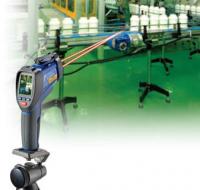| www.tmatlantic.com
Test & Soldering Equipment On-line Store |
|
D.E.V.I.C.E. (Wiki)Calculators Services |
|||||
Filter by first letter
|
Radiation coefficient
Radiation coefficient is a term used for the conditions description of the materials when they radiate energy. The majority (90% of typical examples) of organic materials and painted or covered with oxides surfaces have radiation coefficient of 0.95 which is set in the device on default. The measurement of glittering and metal surfaces will be inaccurate. If you need to measure such object - cover its surface with adhesive tape or apply dull black paint, let such cover get the temperature of the object. After that you can measure the temperature of the tape or the painted surface. Typical values of radiation coefficient
|
Site mapPrivacy policyTerms of Use & Store PoliciesHow to BuyShippingPayment




|

























